Open Journal of Fluid Dynamics
Vol. 3 No. 2 (2013) , Article ID: 33645 , 9 pages DOI:10.4236/ojfd.2013.32012
Conjugate Effects of Heat and Mass Transfer on Natural Convection Flow along an Isothermal Sphere with Radiation Heat Loss
1Department of Natural Science, Stamford University, Stamford, Bangladesh
2Department of Engineering & Technology, Eastern University, Dhaka, Bangladesh
3Department of Mathematics, Bangladesh University of Engineering and Technology, Dhaka, Bangladesh
Email: salina854@gmail.com, ruma_11@live.com, maalim@math.buet.ac.bd
Copyright © 2013 Salina Aktar et al. This is an open access article distributed under the Creative Commons Attribution License, which permits unrestricted use, distribution, and reproduction in any medium, provided the original work is properly cited.
Received January 25, 2013; revised February 28, 2013; accepted March 8, 2013
Keywords: Natural Convection; Radiation Heat Loss; Skin-Friction; Nusselt Number; Schmidt Number; Prandlt Number
ABSTRACT
Conjugate effects heat and mass transfer on free convection flow across an isothermal sphere immersed in a viscous incompressible fluid in the presence of species concentration with radiation heat loss has been investigated in this paper. The governing boundary layer equations are first transformed into a non-dimensional form and the resulting nonlinear systems of partial differential equations are then solved numerically using Finite—difference method with Keller-box Scheme. We have focused our attention on the evaluation velocity profiles, temperature profiles and species concentration profiles of the fluid as well as the local skin friction coefficient, local heat transfer rate and local species concentration transfer rate for a wide range of radiation parameter Rd, Schmidt number Sc and Prandlt number Pr.
1. Introduction
Convection is the mode of energy transfer between a solid surface and the adjacent liquid or gas that is in motion and it involves the combined effects of conduction and fluid motion. The faster the fluid motion, the greater the heat transfers due to convection. Free convection flow is often encountered in cooling of nuclear reactors or in the study of the structure of stars and planets. The study of temperature and heat transfer is of great importance to the engineers because of its almost universal occurrence in many branches of science and engineering. The application of boundary layer techniques to mass transfer has been of considerable assistance in developing the theory of separation processes and chemical kinetics. Some of the interesting problems that have been studied are mass transfer from droplets, free convection on electrolysis in non-isothermal boundary layer. Radiation contributes substantially to energy transfer in furnaces, combustion chambers, fires, and to the energy emission from a nuclear explosion. Radiation must be considered in calculating thermal effects in rocket nozzles, power plants, engines, and high temperature heat exchangers. Radiation can sometimes be important even though the temperature level is not elevated and other modes of heat transfer are present. Radiation has a great effect in the energy equation which leads to a highly non-linear partial differential equation. Heat, mass and momentum transfer on a continuously moving or a stretching sheet has several applications in electrochemistry and polymer processing [1-3].
Gebhart and Pera [4] investigated the natural convection flow resulting from the combined buoyancy effects of thermal and mass diffusion. Diffusion and chemical reaction in an isothermal laminar flow along a soluble flat plate was studied and an appropriate mass-transfer analogue to the flow along a flat plate that contains a species say, A slightly soluble in the fluid say, B has been discussed by Fairbanks and Wick [5]. Hossain and Rees [6] have investigated the combined effect of thermal and mass diffusion in natural convection flow along a vertical wavy surface. The effects of chemical reaction; heat and mass transfer on laminar flow along a semiinfinite horizontal plate have been studied by Anjalidevi and Kandasamy [7]. By taking advantage of the mathematical equivalence of the thermal boundary layer problem with the concentration analogue, results obtained for heat transfer characteristics can be carried directly over to the case of mass transfer by replacing the Prandtl number Pr by the Schimdt number Sc. However, the presence of a chemical reaction term in the mass diffusion equation generally destroys the formal equivalence with the thermal energy problem and moreover, generally prohibits the construction of the otherwise attractive similarity solutions. Takhar et al. [8] for example, considered diffusion of chemically reactive species from a stretching sheet. The application of the boundary layer theory with chemical reaction has been applied to some problems of free and mixed convection flow from the surface of simple geometry by the above authors. Chiang et al. [9] investigated the laminar free convection from a horizontal cylinder. Sparrow and Lee [10] looked at the problem of vertical stream over a heated horizontal circular cylinder. They have obtained a solution by expanding velocity and temperature profiles in powers of x, the co-ordinate measuring distance from the lowest point on the cylinder. The exact solution is still out of reach due to the non-linearity in the Navier-Stokes equations. By taking advantage of the mathematical equivalence of the thermal boundary layer problem with the concentration analogue, results obtained for heat transfer characteristics can be carried directly over to the case of mass transfer by replacing the Prandtl number Pr, the Schimdt number Sc and the radiation parameter Rd.
It appears that Merkin [11,12] was the first who presented a complete solution of this problem using Blasius and Görtler series expansion method along with an integral method and a finite-difference scheme. Ingham [13] investigated the free convection boundary layer flow on an isothermal horizontal cylinder. Recently, Nazar et al. [14], Huang and Chen [15] have considered the problem of natural convection flow from lower stagnation point to upper stagnation point of a horizontal circular cylinder immersed in a micropolar fluid. Effects of pressure work and viscous dissipation on natural convection flow around a sphere with radiation heat loss have been discussed in Akther [16] and Alim et al. [17] respectively. Hye et al. [18] have considered conjugate effects of heat and mass transfer on natural convection flow across an isothermal circular cylinder in presence of chemical reaction.
In the present study the focus is given on the effects of heat and mass transfer on the natural convection boundary layer flow across a sphere with radiation heat loss when the sphere is at a uniform temperature and a uniform mass diffusion. The basic equations are transformed to local non-similarity boundary layer equations, which are solved numerically using a very efficient finitedifference scheme together with the Keller-box method, described by Keller [19] and later by Cebeci and Bradshaw [20]. To the best of our knowledge, this problem has not been considered before.
Numerical results have been shown in terms of local skin friction, rate of heat transfer, rate of species concentration, velocity profiles as well as temperature profiles for a selection of relevant physical parameters consisting of heat radiation parameter Rd, Prandtl number Pr and the Schmidt number Sc are shown graphically. Some results for Skin friction coefficient, rate of heat transfer and rate of species concentration for different values of Schmidt number Sc has been presented in tabular form as well.
2. Formulation of the Problem
Let us consider a steady two-dimensional laminar free convective flow that flows across a uniformly heated sphere of radius a, which is immersed in a viscous and incompressible fluid. It is assumed that the surface temperature of the sphere is , where
, where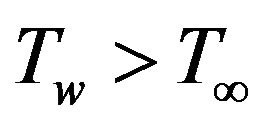 . Here
. Here  is the ambient temperature of the fluid, T is the temperature of the fluid in the boundary layer, g is the acceleration due to gravity,
is the ambient temperature of the fluid, T is the temperature of the fluid in the boundary layer, g is the acceleration due to gravity, 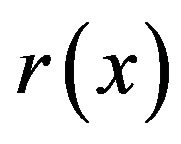 is the radial distance from the symmetrical axis to the surface of the sphere and
is the radial distance from the symmetrical axis to the surface of the sphere and 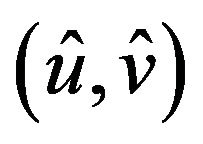 are velocity components along the
are velocity components along the 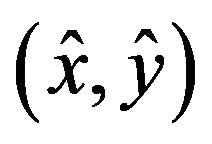 axis. The coordinates system and the configuration are shown in Figure 1.
axis. The coordinates system and the configuration are shown in Figure 1.
Under the usual Boussinesq and boundary layer approximation, the governing equations of the flow are:
 (1)
(1)
 (2)
(2)
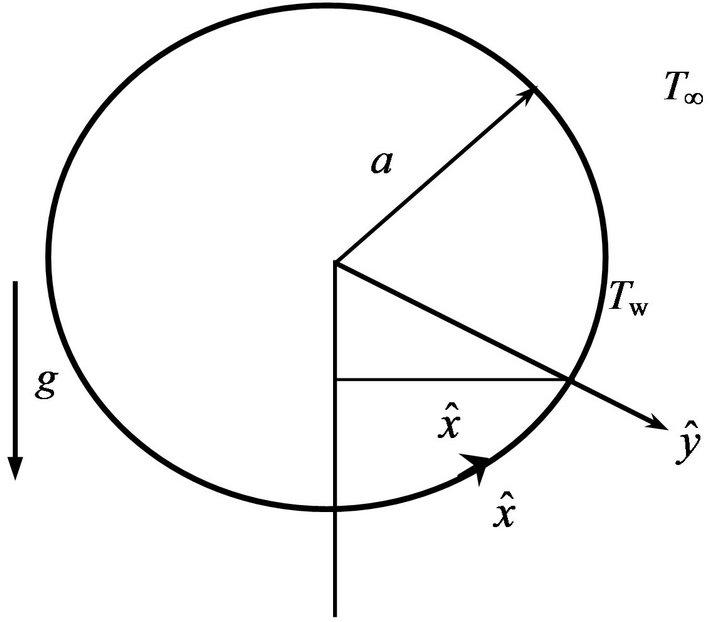
Figure 1. Physical model and coordinate system.
 (3)
(3)
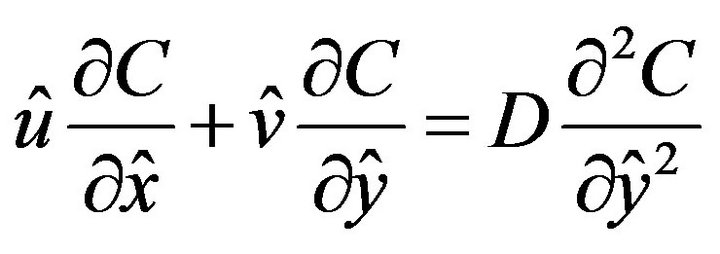 (4)
(4)
The boundary conditions for the Equations (1)-(4) are
 (5a)
(5a)
 (5b)
(5b)
where  is the radial distance from the centre of the sphere, g is the acceleration due to gravity,
is the radial distance from the centre of the sphere, g is the acceleration due to gravity, 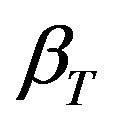 is the coefficient of thermal expansion,
is the coefficient of thermal expansion, 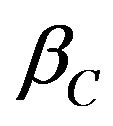 is the coefficient of concentration expansion, µ is the viscosity of the fluid,
is the coefficient of concentration expansion, µ is the viscosity of the fluid,  is the specific heat at constant pressure , ρ is the density, D is the molecular diffusivity of the species concentration and qr is the radiative heat flux in the y direction. In order to reduce the complexity of the problem and to provide a means of comparison with future studies that will employ a more detail representation for the radiative heat flux; we will consider the optically dense radiation limit. Thus the Rosseland diffusion approximation proposed by Siegel and Howell [21] and is given by simplified radiation heat flux term as:
is the specific heat at constant pressure , ρ is the density, D is the molecular diffusivity of the species concentration and qr is the radiative heat flux in the y direction. In order to reduce the complexity of the problem and to provide a means of comparison with future studies that will employ a more detail representation for the radiative heat flux; we will consider the optically dense radiation limit. Thus the Rosseland diffusion approximation proposed by Siegel and Howell [21] and is given by simplified radiation heat flux term as:
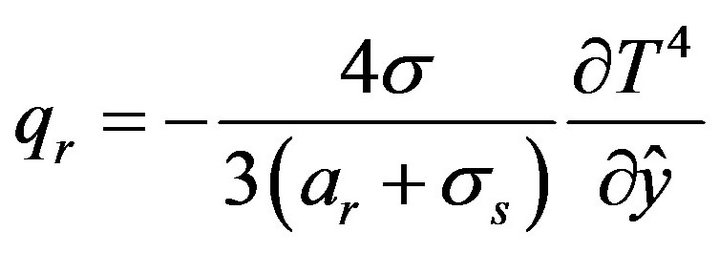 (6)
(6)
We now introduce the following non-dimensional variables:
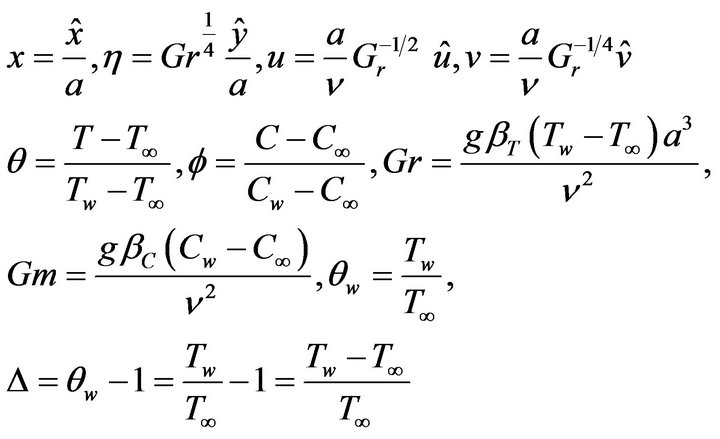 (7)
(7)
where 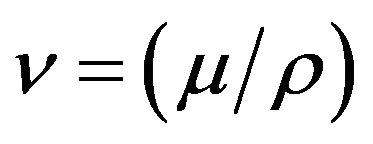 is the reference kinematic viscosity and Gr is the Grashof number,
is the reference kinematic viscosity and Gr is the Grashof number,  is the non-dimensional temperature and
is the non-dimensional temperature and  is the non-dimensional species concentration function.
is the non-dimensional species concentration function.
Substituting the variables (7) into Equations (1)-(4) leads to the following non-dimensional equations
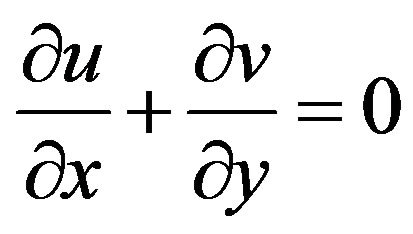 (8)
(8)
 (9)
(9)
 (10)
(10)
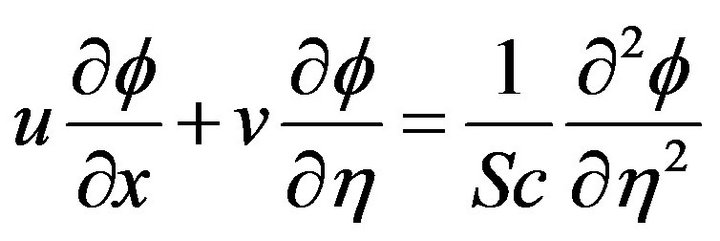 (11)
(11)
The boundary conditions (5) become
 (12a)
(12a)
 (12b)
(12b)
where Rd is the radiation-conduction parameter, Pr is the Prandtl number and N is the ratio of the buoyancy forces due to the temperature & concentration are defined respectively as
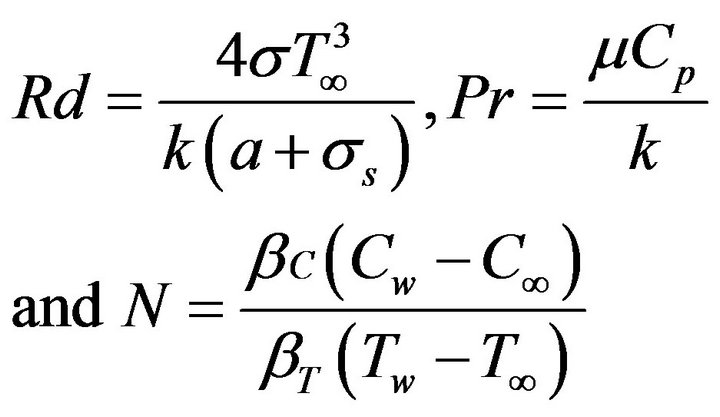 (13)
(13)
To solve Equations (8)-(11), subject to the boundary conditions (12), we assume the following variables
 (14)
(14)
where, y is the non-dimensional stream function, which is related to the velocity components in the usual way as
 (15)
(15)
Substituting (14) into Equations (9)-(11) we get, after some algebra the following transformed equations
 (16)
(16)
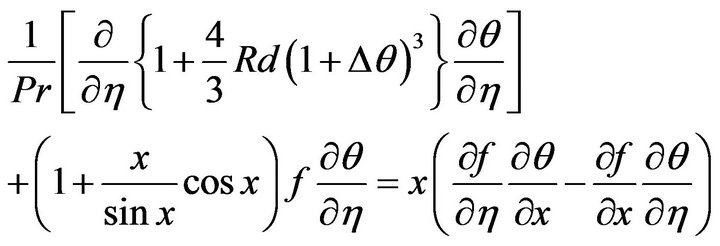 (17)
(17)
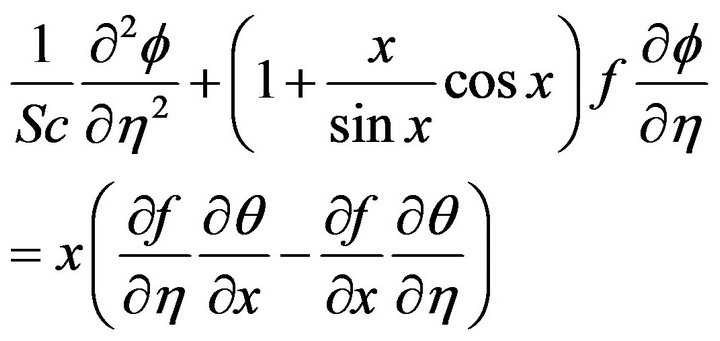 (18)
(18)
along with boundary conditions
 (19a)
(19a)
 (19b)
(19b)
It has been seen that the lower stagnation point of the sphere or , Equations (16)-(18) reduce to the following ordinary differential equations:
, Equations (16)-(18) reduce to the following ordinary differential equations:
 (20)
(20)
 (21)
(21)
 (22)
(22)
Subject to the boundary conditions at
 (23a)
(23a)
 (23b)
(23b)
In the above equations primes denote the differentiation with respect to η.
In practical applications, the physical quantities of main interest are the shearin stress, the rate heat transfer and the rate of species concentration transfer in terms of the skin-friction coefficients Cf, Nusselt number Nu and Sherwood number Sh respectively, which can be written as
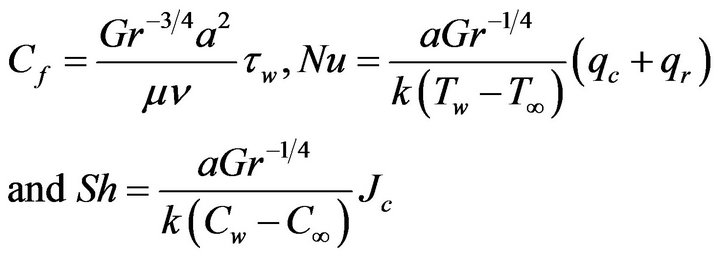 (24)
(24)
where
 (25)
(25)
Using the variables (7), (14) and the boundary condition (19a) into (24)-(25), we get
 (26)
(26)
 (27)
(27)
and
 (28)
(28)
The values of the velocity, temperature and concentration distribution are calculated respectively from the following relations:
 (29)
(29)
3. Results and Discussion
Equations (16)-(18) subject to the boundary conditions were solved numerically using a very efficient implicit finite difference method together with the Keller-box scheme, which is described by Cebeci and Bradshow [20]. The numerical solutions start at the lower stagnation point of the sphere i.e. at  with initial profiles given by the Equations (20)-(22) along with boundary conditions (23) and proceed round the sphere up to the upper stagnation point
with initial profiles given by the Equations (20)-(22) along with boundary conditions (23) and proceed round the sphere up to the upper stagnation point . Solutions are obtained for fluid having Prandtl number
. Solutions are obtained for fluid having Prandtl number  , Schimdt number
, Schimdt number  , and for a wide range of the values of Radiation parameter
, and for a wide range of the values of Radiation parameter
 . Since the values of
. Since the values of
 are known from the solutions of the Equations (16)-(18), numerical values of the local skin-friction coefficient
are known from the solutions of the Equations (16)-(18), numerical values of the local skin-friction coefficient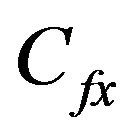 , the local Nusselt number
, the local Nusselt number  and the local Sherwood number
and the local Sherwood number 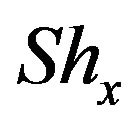 are calculated respectively from the Equations (26)- (28) for the surface of the sphere from lower stagnation point to upper stagnation point. Numerical values of
are calculated respectively from the Equations (26)- (28) for the surface of the sphere from lower stagnation point to upper stagnation point. Numerical values of 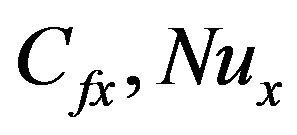 and
and 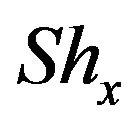 are depicted in Tables 1, 2 and Figures 2-5. A comparison of the local Nusselt number
are depicted in Tables 1, 2 and Figures 2-5. A comparison of the local Nusselt number 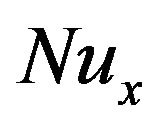 and
and  for different values of curvature parameter x while
for different values of curvature parameter x while  and
and , obtained in the present work and obtained earlier by Hye et al. [18] and Merkin [12] has been made in Table 1. It is clearly seen that there is an excellent agreement among the respective results.
, obtained in the present work and obtained earlier by Hye et al. [18] and Merkin [12] has been made in Table 1. It is clearly seen that there is an excellent agreement among the respective results.
The effect of the Prandtl number Pr, on the reduced

Table 1. Numerical values of Cfx and Nux for different values of curvature parameter x while Pr = 1.0 and Rd = 0.0.

Table 2. Skin friction coefficient, rate of heat transfer and rate of species concentration against x for different values of the Schmidt number Sc with other controlling parameters Pr = 0.72 and radiation parameter Rd = 0.30.
(a)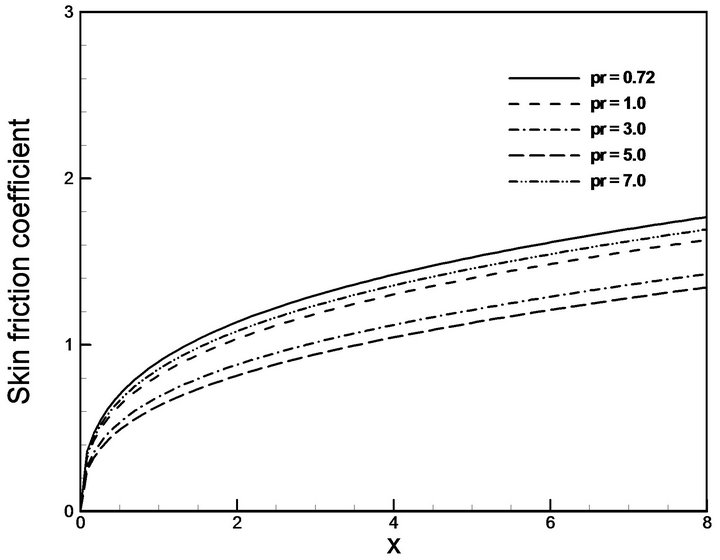 (b)
(b)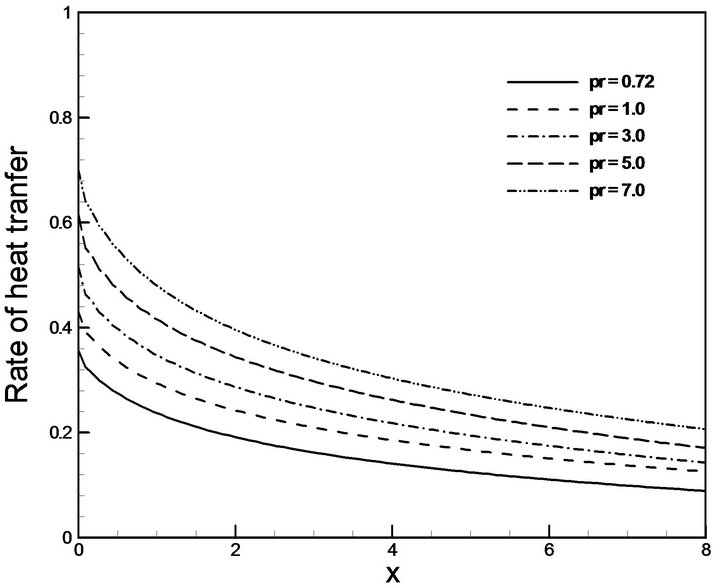 (c)
(c)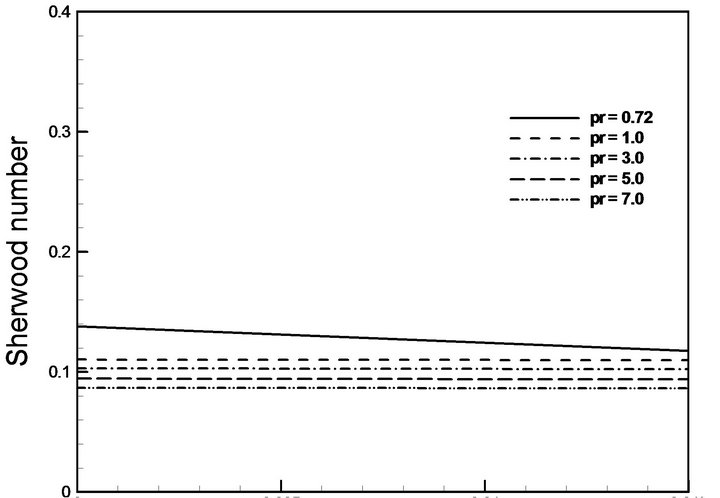
0 0.005 0.01 0.015 X
ss Figure 2. (a) Skin friction coefficient; (b) Rate of heat transfer and (c) Rate of species concentration for different values of Pr while Rd = 0.30 and Sc = 0.73.
local skin-friction coefficient Cfx, local Nusselt number Nux and the local Sherwood number Shx is shown in
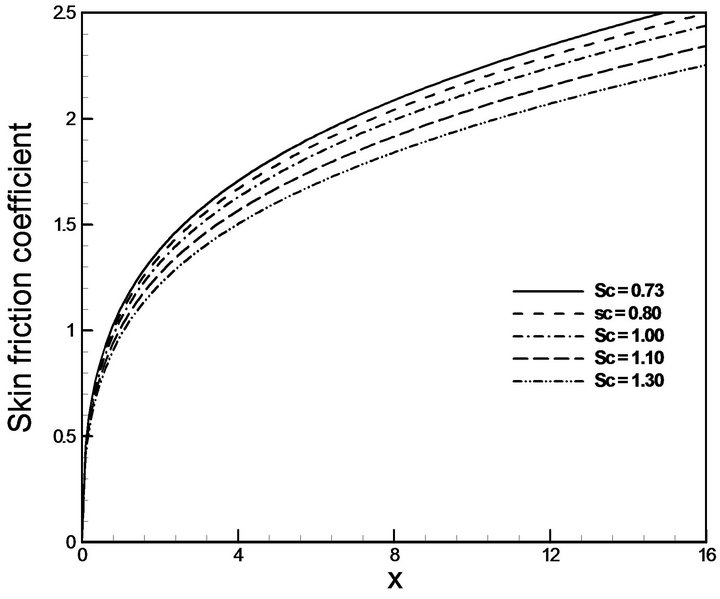 (a)
(a)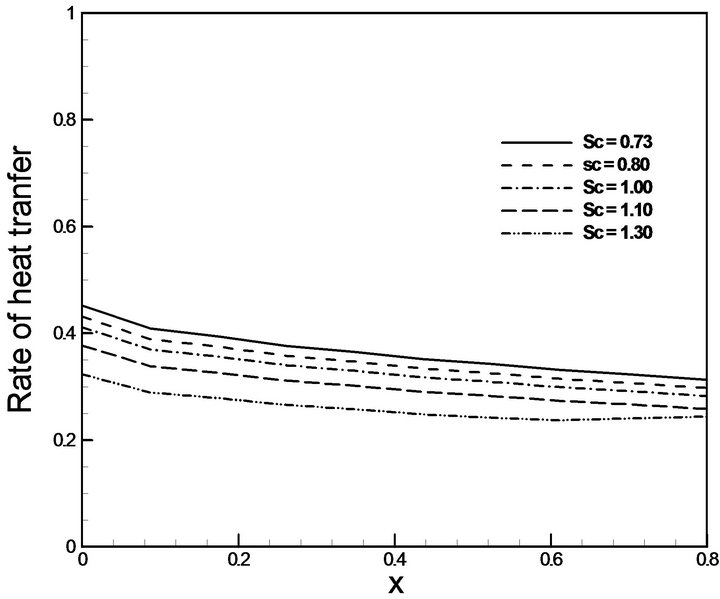 (b)
(b)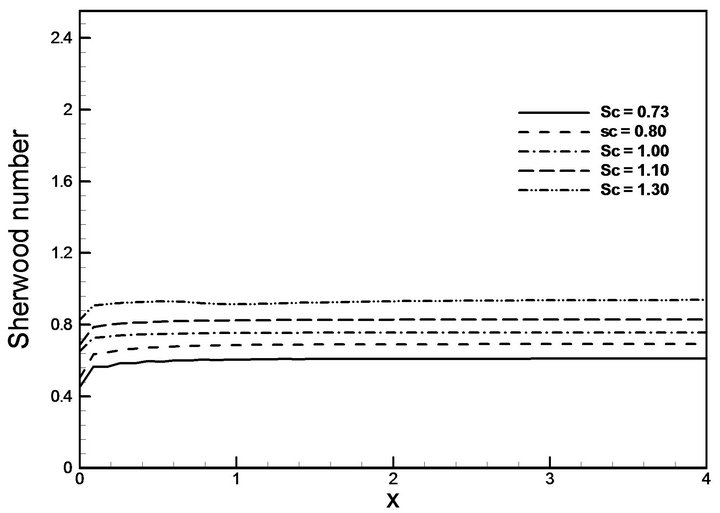 (c)
(c)
Figure 3. (a) Skin friction coefficient; (b) Rate of heat transfer and (c) Rate of species concentration for different values of Sc while Pr = 0.72 and Rd = 0.30.
Figures 2(a)-(c) respectively for Pr = 0.72, 1.0, 3.0, 5.0, 7.0, while  and
and . It is seen that an increase in the Prandtl number, leads to a decrease in the
. It is seen that an increase in the Prandtl number, leads to a decrease in the
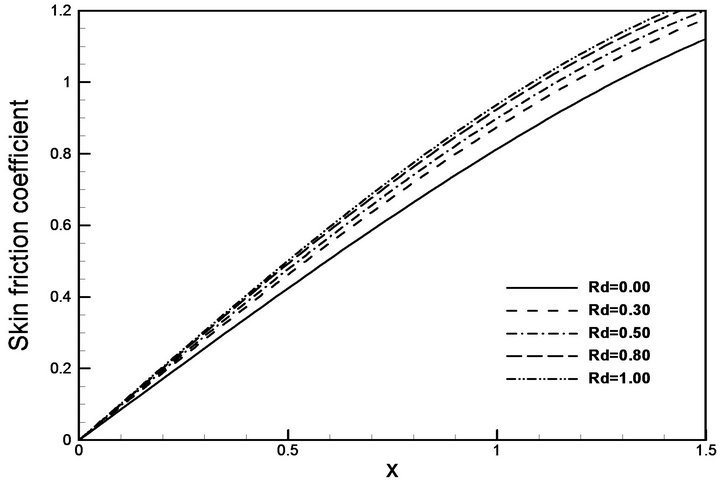 (a)
(a)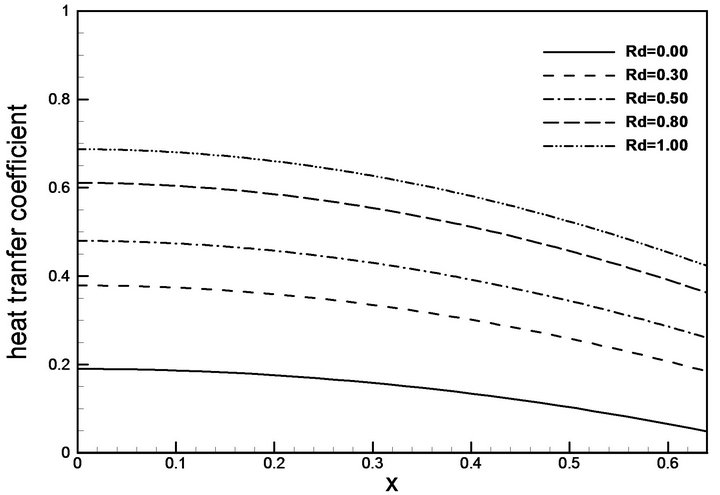 (b)
(b) (c)
(c)
Figure 4. (a) Skin friction coefficient; (b) Rate of heat transfer and (c) Rate of species concentration for different values of Rd while Pr = 0.72 and Sc = 0.73.
local skin-friction coefficient and the local Sherwood number and an increase in the local Nusselt number. This may be attributed to the fact that the increase in the values of implies more interaction of species concentration with the thermal boundary layer and less interaction with the momentum boundary layer.
Variation in the Schimdt number Sc (Sc = 0.73, 0.80, 1.00, 1.10, 1.30) are considered in Figures 3(a)-(c) while  and
and . The local skin-friction coef-
. The local skin-friction coef-
 (a)
(a)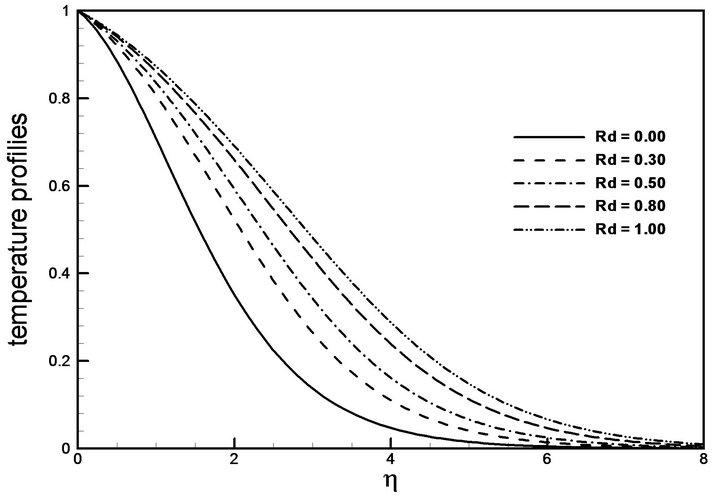 (b)
(b) (c)
(c)
Figure 5. (a) Velocity; (b) Temperature and (c) Concentration distribution for different values of Rd while while Pr = 0.72 and Sc = 0.73.
ficient 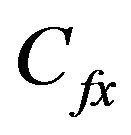 and the local Nusselt number
and the local Nusselt number 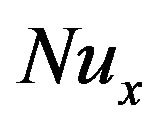 decrease uniformly and the local Sherwood number
decrease uniformly and the local Sherwood number  increases significantly with the increasing values of Sc, which is expected.
increases significantly with the increasing values of Sc, which is expected.
Figures 4(a)-(c) show how variations in radiation parameter  affect the flow. When
affect the flow. When , the flow is induced entirely by thermal effects and the detailed concentration field is computed as a forced convection problem, however, when
, the flow is induced entirely by thermal effects and the detailed concentration field is computed as a forced convection problem, however, when ,it is the concentration field which induce the boundary flow. It can be stated that an increase in the values of Rd leads to an increase in the values of the local skin-friction coefficients
,it is the concentration field which induce the boundary flow. It can be stated that an increase in the values of Rd leads to an increase in the values of the local skin-friction coefficients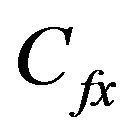 , local Nusselt number
, local Nusselt number 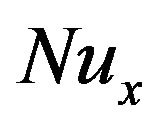 and decreases smoothly in the local Sherwood number
and decreases smoothly in the local Sherwood number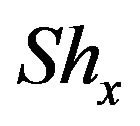 .
.
Figures 5(a)-(c) illustrate the effect of varying values of radiation parameter  on the velocity, temperature and species concentration profiles at
on the velocity, temperature and species concentration profiles at 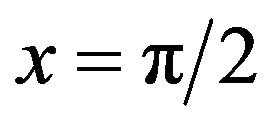 while
while  and
and . Here it is found that the velocity profiles increases sharply and the non-dimensional temperature and concentration profile decrease significantly with the increase of radiation parameter Rd.
. Here it is found that the velocity profiles increases sharply and the non-dimensional temperature and concentration profile decrease significantly with the increase of radiation parameter Rd.
In Table 2 we have entered the numerical values  and Nux for different values of
and Nux for different values of  while
while  and
and . It is observed that for increasing axial distance parameter x, the values of skinfriction increase and the values of rate of heat transfer and that of the rate of species concentration decrease for the values of Schmidt number Sc. On the other hand both the
. It is observed that for increasing axial distance parameter x, the values of skinfriction increase and the values of rate of heat transfer and that of the rate of species concentration decrease for the values of Schmidt number Sc. On the other hand both the 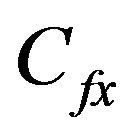 and
and 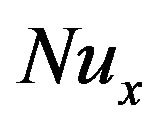 decrease and
decrease and 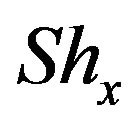 increases accordingly as Schmidt number Sc increases. And these changes in
increases accordingly as Schmidt number Sc increases. And these changes in  and
and 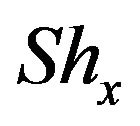 due to an increase in Sc are consistent with a free convection boundary layer.
due to an increase in Sc are consistent with a free convection boundary layer.
4. Conclusions
Conjugate effect of heat and mass transfer in natural convection flow from an isothermal sphere with radiation heat loss has been investigated numerically. New variables to transform the complex geometry into a simple shape have been introduced and the resulting non-similarity boundary layer equations are solved by a very efficient implicit finite difference method together with the Keller-box scheme [19]. From the present investigation the following conclusions may be drawn:
• Both the local skin-friction coefficient  and the local Nusselt number
and the local Nusselt number 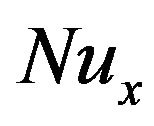 increase and the local Sherwood number
increase and the local Sherwood number  decrease when the value of the radiation parameter increases.
decrease when the value of the radiation parameter increases.
• As Rd increases both the concentration distribution and the temperature profile decrease significantly and the velocity profile increases slightly at 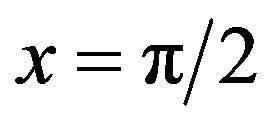 of the surface.
of the surface.
• An increase in the values of Pr leads to an increase in the values of the local skinfriction coefficients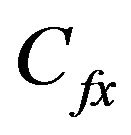 , local Nusselt number
, local Nusselt number 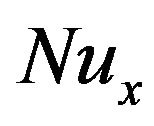 and the local Sherwood number
and the local Sherwood number .
.
• The skin-friction coefficient 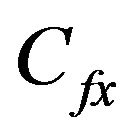 and local Nusselt number
and local Nusselt number 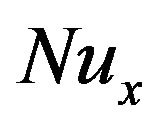 decrease and the rate of species concentration
decrease and the rate of species concentration  increases within the boundary layer as the value of Sc increases.
increases within the boundary layer as the value of Sc increases.
REFERENCES
- R. M. Griffith, “Velocity Temperature and Concentration Distributions during Fiber Spinning,” Industrial and Engineering Chemistry Fundamentals, Vol. 3, No. 3, 1964, pp. 245-250. doi:10.1021/i160011a013
- L. E. Erickson, L. T. Fan and V. G. Fox, “Heat and Mass Transfer on a Moving Continuous Flat Plate with Suction or Injection,” Industrial and Engineering Chemistry Fundamentals, Vol. 5, No. 1, 1966, pp. 19-25. doi:10.1021/i160017a004
- R. S. R. Gorla, “Unsteady Mass Transfer in the Boundary Layer on a Continuous Moving Sheet Electrode,” Journal of the Electrochemical Society, Vol. 125, No. 6, 1978, pp. 865-869. doi:10.1149/1.2131569
- B. Gebhart and L. Pera, “The Nature of Vertical Natural Convection Flow Resulting from the Combined Buoyancy Effects of Thermal and Mass Diffusion,” International Journal of Heat and Mass Transfer, Vol. 14, No. 12, 1971, pp. 2025-2050. doi:10.1016/0017-9310(71)90026-3
- D. F. Fairbanks and C. R. Wick, “Diffusion and Chemical Reaction in an Isothermal Laminar Flow along a Soluble Flat Plate,” Industrial and Engineering Chemistry Research, Vol. 42, No. 3, 1950, pp. 471-475. doi:10.1021/ie50483a022
- M. A. Hossain and D. A. S. Rees, “Combined Heat and Mass Transfer in Natural Convection,” ASME Journal of Heat Transfer, Vol. 86, 1964, pp. 537-542. doi:10.1007/BF01179253
- S. P. Anjalidevi and R. Kandasamy, “Effects of Chemical Reaction, Heat and Mass Transfer Laminar Flow along a Semi Infinite Horizontal Plate,” Heat and Mass Transfer, Vol. 35, No. 6, 1999, pp. 465-467. doi:10.1007/s002310050349
- H. S. Takhar, A. J. Chamkha and G. Nath, “Flow and Mass Transfer on Stretching Sheet with Magnetic Field and Chemically Reactive Species,” International Journal of Engineering Science, Vol. 38, No. 12, 2000, pp. 1303- 1314. doi:10.1016/S0020-7225(99)00079-8
- T. Chiang and J. Kaye, “On Laminar Free Convection from a Horizontal Cylinder,” Journal of Heat Transfer, Vol. 86, 1964, pp. 537-542. doi:10.1115/1.3688739
- E. M. Sparrow and L. Lee, “Analysis of Mixed Forced and Free Convection about a Horizontal Cylinder,” International Journal of Heat and Mass Transfer, Vol. 19, No. 2, 1977, pp. 229-232. doi:10.1016/0017-9310(76)90118-6
- J. H. Merkin, “Free Convection Boundary Layer on an Isothermal Horizontal Circular Cylinder,” Journal of Applied Mathematics and Physics (ZAMP), Vol. 29, No. 6, 1978, pp. 871-883.
- J. H. Merkin, “Mixed Convection from a Horizontal Circular Cylinder,” International Journal of Heat and Mass Transfer, Vol. 20, No. 1, 1977, pp. 73-77. doi:10.1016/0017-9310(77)90086-2
- D. B. Ingham, “Free-convection Boundary Layer on an Isothermal Horizontal Cylinder,” Zeitschrift für angewandte Mathematik und Physik ZAMP, Vol. 29, No. 6, 1978, pp. 871-883. doi:10.1007/BF01590813
- R. Nazar, N. Amin and I. Pop, “Free Convection Boundary Layer on an Isothermal Horizontal Circular Cylinder in a Micropolar Fluid,” Proceedings of the 12th International Heat Transfer Conference, Grenoble, 2002, pp. 525-530.
- M. J. Huang and C. K. Chen, “Laminar Free Convection from a Sphere with Blowing and Suction,” Journal of Heat Transfer, Vol. 109, No. 2, 1987, pp. 529-532. doi:10.1115/1.3248117
- T. Akther and M. A. Alim, “Effects of Pressure Work on Natural Convection Flow around a Sphere with Radiation Heat Loss,” Nonlinear Analysis: Modelling and Control, Vol. 15, No. 3, 2010, pp. 287-298.
- M. A. Alim, M. M. Rahman and S. Aktar, “Viscous Dissipation Effects on Natural Convection Flow along a Sphere with Radiation Heat Loss,” Proceedings of the 4th BSME-ASME International Conference on Thermal Engineering, 27-29 December 2008.
- Md. A. Hye, Md. M. Molla and M. A. H. Khan, “Conjugate Effects of Heat and Mass Transfer on Natural Convection Flow across an Isothermal Horizontal Circular Cylinder with Chemical Reaction,” Nonlinear Analysis: Modelling and Control, Vol. 12, 2007, pp. 191-201.
- H. B. Keller, “Numerical Methods in Boundary Layer Theory,” Annual Review of Fluid Mechanics, Vol. 10, No. 1, 2010, pp. 417-433. doi:10.1146/annurev.fl.10.010178.002221
- T. Cebeci and P. Bradshaw, “Physical and Computational Aspects of Convective Heat Transfer,” Springer, New York, 1984. doi:10.1007/978-3-662-02411-9
- R. Siegel and J. R. Howell, “Thermal Radiation Heat Transfer,” McGraw-Hill, New York,1972.
Nomenclature
a: radius of the sphere ar: Rosseland mean absorption co-efficient C: species concentration in the fluid C∞: species concentration with fluid away from the sphere Cf: skin-friction coefficient Cp: specific heat at constant pressure Cfx: local-skin friction D: chemical molecular diffusivity f: dimensionless stream function g: acceleration due to gravity Gr: Grashof number Gm: local mass Grashof number Jc: Concentration flux K: thermal conductivity Nu: Nusselt number Nux: Local Nusselt number Pr: Prandtl number qr: radiation heat flux r: radial distance Rd: radiation parameter Sc: Schimdt number Shx: local Sherwood Number T: temperature of the fluid in the boundary layer T∞: temperature of the ambient fluid Tw: temperature at the surface u, v: dimensionless velocity components
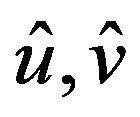 : velocity components x, y: dimensionless cartesian components cartesian components
: velocity components x, y: dimensionless cartesian components cartesian components
Greek Symbols
b: volumetric coefficient of thermal expansion
x: dimensionless coordinates along the surface
h: dimensionless coordinates normal to the surface
q: dimensionless temperature
m: viscosity of the fluid
n: kinematic viscosity
r: density of the fluid
tw: shearing stress
y: stream function

